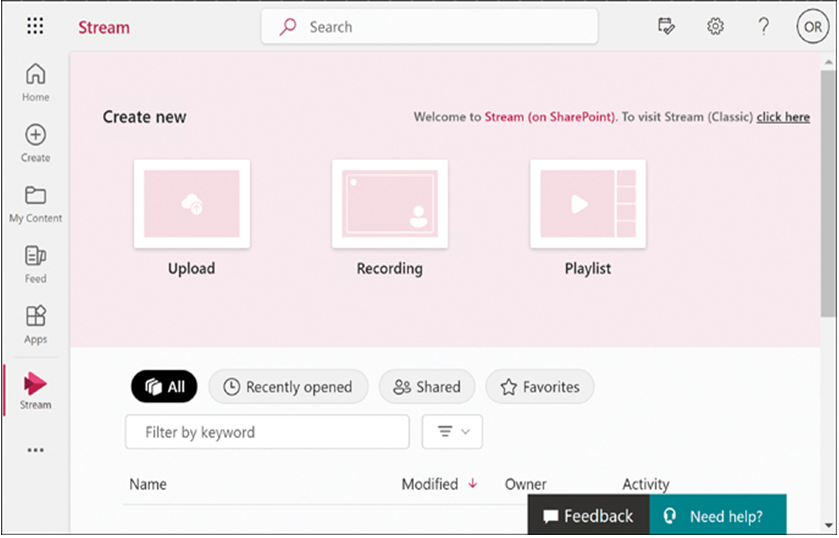Every user registering a personal Microsoft account for use with Windows or other applications receives a free OneDrive account for storing personal files in the cloud. There is also an equivalent OneDrive service provided with Microsoft 365. The personal OneDrive and the Microsoft 365 OneDrive are nearly identical in their functionality. Users can access their OneDrive files from any device with access to the cloud and sync their files to a local disk.
The primary difference between personal OneDrive and Microsoft 365 OneDrive is that the latter is administered as part of Microsoft 365. Office users receive 1 TB of cloud storage space in a personal OneDrive account. However, in Microsoft 365 OneDrive, the amount of space allocated to each user and the access permissions granted to that space are controlled by Microsoft 365 administrators.
OneDrive serves as a storage medium for other Microsoft 365 services. Office uses it for general cloud storage, and Microsoft Teams uses it to store user files and files shared in private chats. However, files shared in a Microsoft Teams channel are stored in a SharePoint library associated with a team site. Users can also access documents stored in SharePoint libraries using the OneDrive client.
Microsoft Stream
Microsoft Stream is a video storage and distribution service that enables browser clients to stream video and provides video content to other Microsoft 365 services, including Office applications, Exchange Online, SharePoint, Microsoft Teams, and Yammer. The Stream service includes its own Azure-based storage and therefore has its own storage quotas.
In addition to accepting preexisting video content uploaded by users, as shown in Figure 2-30, Microsoft Stream can process live events created in Microsoft Teams, Yammer, or Stream itself and provide them as streamed video to real-time users or later as on-demand video content.
Stream can also enhance the video content by generating speech-to-text transcripts and closed captioning, as well as by identifying and indexing the faces of the people speaking in the video. This enables users to locate specific footage in a video by searching for spoken terms or locating a particular speaker. Stream has also introduced a “blur” feature that makes it possible to defocus the background in a video, eliminate distractions and unwanted artifacts, and concentrate the viewer’s attention on the speaker.

FIGURE 2-30 The Microsoft Stream home page interface
